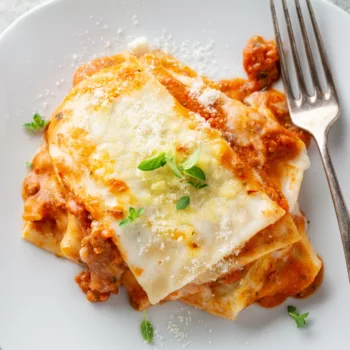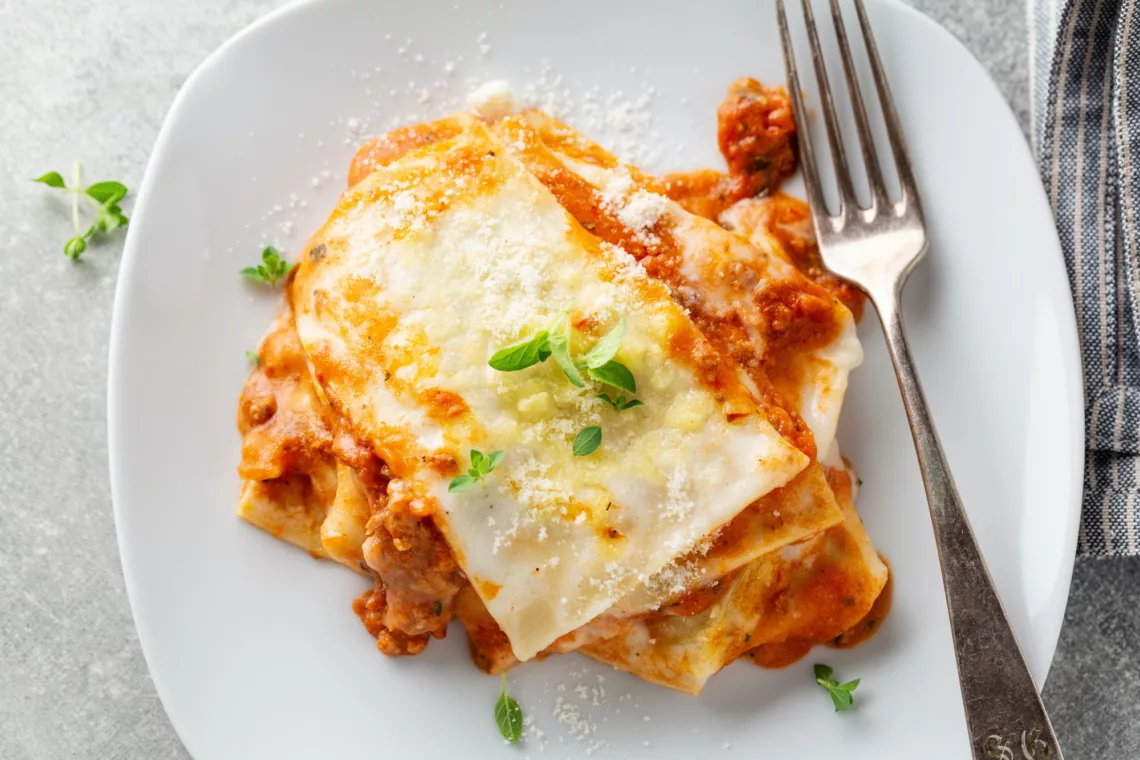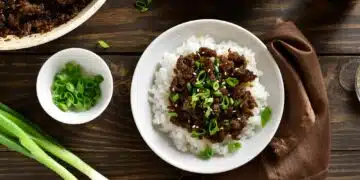Are you ready for a dish that will make your mouth water? This recipe for Authentic Italian Lasagne is precisely what you need to get your day started right. Lasagne is a dish that deserves to be savoured. Because this is an elaborate dish, there is a lot of intricacy in this dish. Ensure to pay close attention to every aspect of this dish because there is a lot to take in.
The attention to detail in this dish is crucial because it reveals the genuine masterpiece that it is. In this dish, the seasonings are precisely correct. It’s incredible to watch how this tasty can genuinely come together when you put in the effort.
Gather your friends and family and begin making this recipe because there is no way you will ever be sorry for producing something so tasty. Try serving with the No Churn Vanilla Ice Cream.
Note – Lasanga in North America and Lasagne everywhere else in the world.
Is lasagne an authentic Italian dish?
Lasagne is a traditional Italian dish that consists of layers of pasta, sauce, and cheese. The word lasagne comes from the Greek word λάσανος (lasanos), which means “chamber pot”. The dish is believed to have originated in the city of Naples, and it has been a staple of Italian cuisine for centuries. However, there is some debate about whether or not lasagne is truly an authentic Italian dish. Some experts believe that it was actually invented in the Middle East and brought to Italy by Arabic immigrants. Others argue that lasagne is simply a variation of another Italian dish called lasagnetta. Regardless of its origins, lasagne is now one of the most popular Italian dishes in the world.
What are the ingredients in traditional Italian lasagne?
Traditional lasagne is a dish that originates from Italy. It is made with wide, flat noodles, meat sauce, and cheese. There are many different regional variations of this dish, but the most common ingredients include ground beef, tomatoes, onions, garlic, and herbs. The noodles are typically cooked in boiling water before they are assembled with the other ingredients. Some recipes also call for a layer of ricotta cheese or spinach to be added to the dish. Whether you make it with ground beef or sausage, tomatoes or tomato sauce, lasagne is a delicious and classic Italian dish.
How many layers are in an authentic lasagne?
While there is no set number of layers, most authentic lasagne recipes call for at least three layers of pasta and two or three layers of sauce. For the pasta, many recipes call for sheets of fresh lasagne, but you can also use dry lasagne noodles that have been boiled for a few minutes. Whether you make it with three layers or ten, there’s no denying that lasagne is a truly delicious dish.
What are the 3 main components of a lasagne?
The three main components of a lasagne are the pasta, the sauce, and the cheese. The pasta is usually made with durum wheat flour, water, and salt. The sauce is typically a meat- or tomato-based sauce. The cheese is typically mozzarella, although other types of cheese can be used as well. Lasagne can also be made with vegetables, such as spinach or mushrooms.

Authentic Italian Lasagne
Ingredients
 2 pounds Ricotta cheese
2 pounds Ricotta cheese 1 pound Mozzarella cheese
1 pound Mozzarella cheese- 1 ½ cups Parmigiano-Reggiano - grated
 2 pounds lasagna sheets
2 pounds lasagna sheets 2 tablespoons olive oil
2 tablespoons olive oil 2 eggs
2 eggs 1 pinch ground black pepper
1 pinch ground black pepper 1 pinch salt
1 pinch salt
For the meat sauce
 2 can tomato
2 can tomato ¼ cup olive oil
¼ cup olive oil 2 yellow onion - chopped
2 yellow onion - chopped 1 pound ground beef (minced beef)
1 pound ground beef (minced beef) 8 teaspoons garlic - minced
8 teaspoons garlic - minced 1 pinch salt
1 pinch salt 1 pinch ground black pepper
1 pinch ground black pepper ¾ cup white wine
¾ cup white wine ½ cup tomato paste
½ cup tomato paste 1 tablespoon oregano
1 tablespoon oregano 3 cups water
3 cups water
Instructions
- Let’s start with the cheese. In a large mixing basin, combine the ricotta and mozzarella cheeses, as well as the two eggs. Mix in one cup of Parmigiano-Reggiano, pepper, salt, and oil to the mixture.
- In the meantime, get started on the beef sauce. To begin, heat the olive oil in a large pot. Maintain medium heat and add the yellow onions. Cook for about 5 minutes, or until the onions are soft.
- Stir the garlic mixture into the pot and let it cook until it has turned a golden brown colour.
- Add the ground beef, as well as the salt and pepper to taste. Make sure to break up the meat into tiny pieces by stirring it. Before the meat begins to brown, it must be cooked for at least 15 minutes.
- Cook until your mixture begins to boil, then add your oregano and wine.
- Continue to mix in the tomatoes and tomato paste and the water until all ingredients are well combined.
- Putting Lasagna Together
- While you’re assembling the meat sauce and cheese mixture, start the lasagne noodles to boil. When they’re done, place them on a waxed paper-lined baking sheet to dry. Then, please take a few and place them at the bottom of the lasagne pan.
- Spread the cheese mixture on top of the lasagne noodles. Then pour in your meat sauce. Continue this process after the first layer, adding a layer of noodles, then a layer of cheese, and finally the meat sauce.
- When you reach the top layer of the lasagne, pour the remaining meat sauce on top and sprinkle with the remaining 1/2 cup grated Parmigiano-Reggiano.
- Cover the lasagne with foil and bake at 325 degrees Fahrenheit for about 20 minutes.











